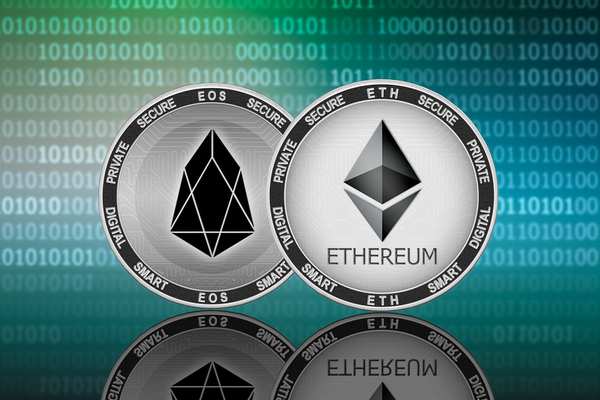
EOS is a blockchain platform meant for the development of decentralized applications (Dapps), quite similar to the function that Ethereum serves. In fact, its purpose is so similar that EOS has been called “the Ethereum killer” by its proponents. While it hasn’t overtaken Ethereum, it has seen its digital currency rise to the fifth spot in term of market capitalization, highlighting the popularity of the EOS platform and its related utility token.
EOS was built to improve on existing blockchain projects in various ways. Some of these are as follows:
- It is more secure than bitcoin.
- The decentralized applications hosted on EOS do not require micropayments like the Ethereum network.
- EOS can scale to millions of transactions per second easily by emphasizing consensus over events rather than consensus over stake like most blockchains.
- The EOS network includes cloud hosting, storage, and download bandwidth for applications.
- Transactions are verified in under a second.
With all these great features and the rising popularity of the blockchain, it makes sense to get on board with EOS and put some in your crypto portfolio.
What’s easier than mining EOS to put some in your wallet?
There’s only one problem with that. You can’t mine EOS. It isn’t a proof of work token, and all of the EOS tokens that will ever exist have already been created. In fact, it’s interesting to note that even though proponents call EOS the Ethereum killer, the EOS token itself is built from Ethereum and is an ERC-20 compatible token.
There is a way around the lack of mineability for EOS tokens. Since EOS is an ERC-20 token, you can mine Ethereum and then convert your ETH to EOS at an exchange platform such as Binance. In fact, you could mine any coin at all and convert it to ETH or BTC and then to EOS.

Just follow this simple EOS mining guide step-by-step and you’ll soon have some EOS in the wallet of your choice:
- Download mining software and configure it for the mining pool of your choice.
- Mine ETH.
- Send the ETH to a Binance wallet (or other exchange; there are dozens that offer EOS).
- Convert your ETH to EOS.
- Congratulations! You’ve “mined” some EOS.
- Transfer the EOS to your own wallet off the exchange. Any ERC-20 compatible wallet will work.
If you need additional information about how to mine Ethereum, have a look at our guide How to Mine Ethereum.
If you aren’t interested in mining Ethereum with your own computer, you could also mine Ethereum using a cloud mining service and then convert that Ether to EOS. Cloud mining is a convenient method of mining where you rent the computing power of a server from a cloud mining company. They do the mining and you get the rewards. Some popular and easy-to-use platforms for cloud mining are Hashflare and Genesis Mining.
Though you cannot mine EOS directly, that doesn’t have to stop you. Simply use this guide as a workaround.
Before you start mining, take a moment to subscribe to Bitcoin Market Journal so you never miss out on our unbiased and useful guides and crypto information.

